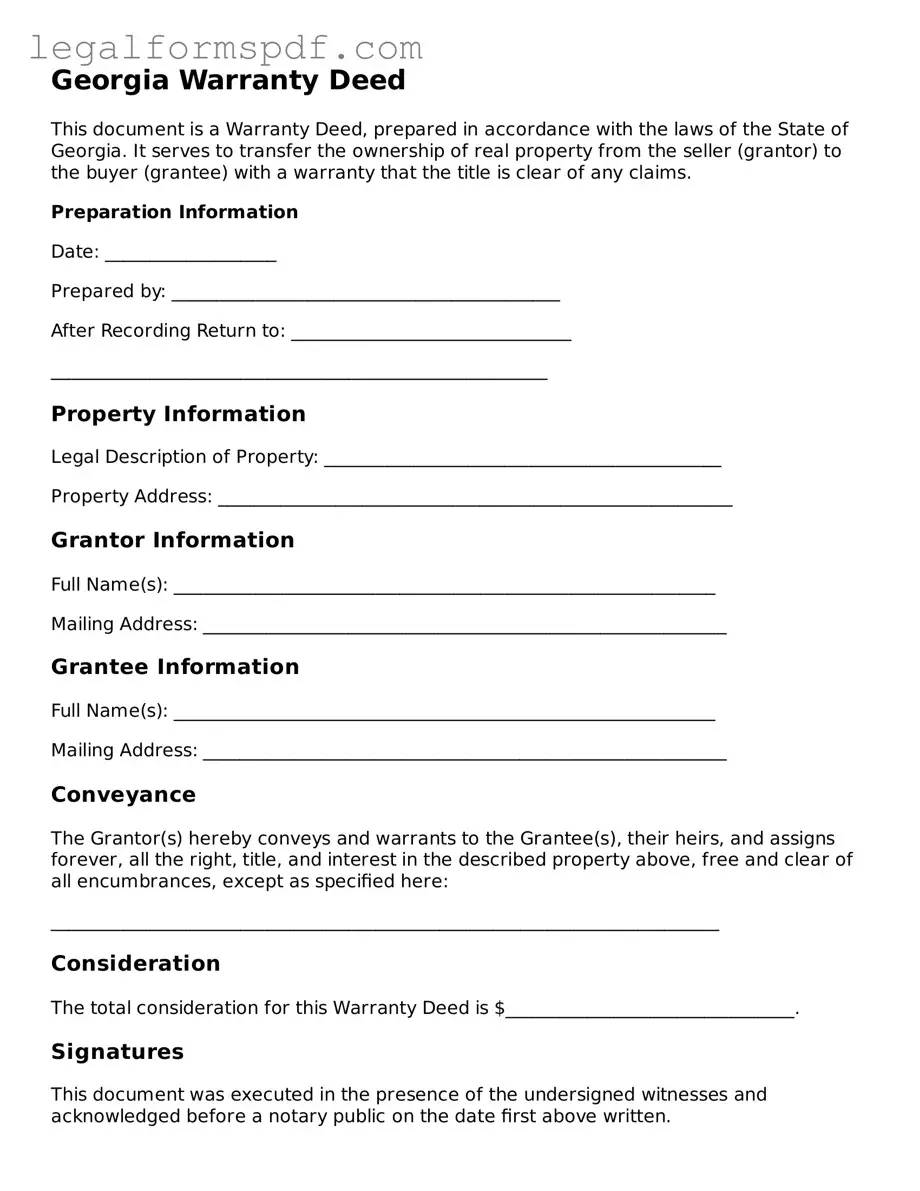Georgia Warranty Deed
This document is a Warranty Deed, prepared in accordance with the laws of the State of Georgia. It serves to transfer the ownership of real property from the seller (grantor) to the buyer (grantee) with a warranty that the title is clear of any claims.
Preparation Information
Date: ___________________
Prepared by: ___________________________________________
After Recording Return to: _______________________________
_______________________________________________________
Property Information
Legal Description of Property: ____________________________________________
Property Address: _________________________________________________________
Grantor Information
Full Name(s): ____________________________________________________________
Mailing Address: __________________________________________________________
Grantee Information
Full Name(s): ____________________________________________________________
Mailing Address: __________________________________________________________
Conveyance
The Grantor(s) hereby conveys and warrants to the Grantee(s), their heirs, and assigns forever, all the right, title, and interest in the described property above, free and clear of all encumbrances, except as specified here:
__________________________________________________________________________
Consideration
The total consideration for this Warranty Deed is $________________________________.
Signatures
This document was executed in the presence of the undersigned witnesses and acknowledged before a notary public on the date first above written.
Witness #1 Signature: _______________________________ Date: ________________
Witness #2 Signature: _______________________________ Date: ________________
Notary Public Signature: _____________________________ Date: ________________
My Commission Expires: ______________________________
This document follows specific state statutes applicable to Georgia, hence it is advised to consult with a legal professional before finalization to ensure compliance with current laws and regulations.
